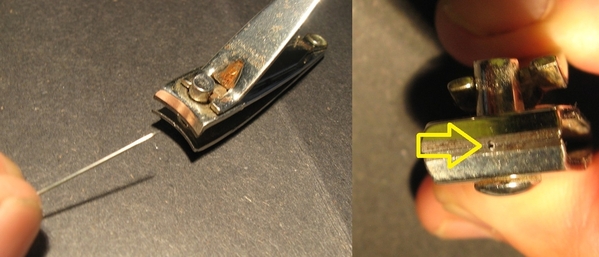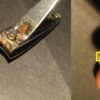Hi,
Some of you may recall that about 3 months ago, I was trying to find a simple motion detector switch to turn on my Atlas Well Pump (derrick) and a small flashing light. Both the pump and light operate on DC current.
My power supply is a very small DC transformer with throttle control, designed for N Gauge trains, that I bought used for $5.00. I have it set on low, about 5 volts.
I decided to buy an Evans Design DC Motion sensor switch, which turns on when it senses motion, then runs for 15 seconds, and then turns off. It is very inexpensive, about $10 with shipping. Although the main title says that it is for operating LED lights, the description plainly states that it can be used for other trackside accessories.
The sensor has a fish-eye lens, which looks like a Bee's eye, that covers a complete hemisphere, 360 degrees. I found that it can detect motion anywhere around or over it, out to a distance of 4 feet or so.
I mounted the sensor by drilling a hole in the top of a mouthwash cap, and having the lens stick through the top. Here is a picture of the sensor label and the mounting.
In the foregoing picture, you only see two wires coming from the sensor, but in reality, there are four. Two go to the power, and two go to the accessory.
I very "loosely" wired up the sensor to the 18 gauge power lines running from the transformer, and to the lines running to the oil pump and a small 3-5 volt LED light, and it worked great. Any motion turns both of these on for 15 seconds, and then it goes off. BEST OF ALL, is that you can cover up the sensor with a dark object, leaving only a portion of the fish-eye exposed, and the sensor will only come on when there is motion in the field of the uncovered eye. I was able to place a Lionel lantern cover over it (from an O22 Switch), with three of the lenses covered with black tape, and one of the lenses removed to create a round hole, and the sensor would only come on if a train went past the round hole.
So, everything was great and I proceeded to try to permanently wire the circuit.
BUT, then my project failed.
1. The wires on the switch are super thin, and they are far thinner than 22 gauge. When the switch arrives, only about 3/8ths of an inch of the wires are striped on the ends, and I needed about 1/2 to 3/4ths of an inch striped. My standard wire stripper slots were no good, and I had to somewhat "scrap" the covering off of the wires.
2. However, these are solid wires, and trying to scrape them created dents and stresses in the exposed wire, which caused the wire ends to break off as soon as any curves or movement was applied to them.
3. So, my first question is: What type of tool should I buy to strip these super fine wires? Is it even possible to strip them?
4. My next problem was, that even on the ends that I was able to strip, I could find absolutely no way to attach them to the 18 gauge power feed wires. I tried using crimp connectors (18 gauge, with the 18 gauge wire shoved in one side and the thin wire shoved in the other), but the very act of crimping the connector tight served to "snap-off" the thin wire. Even when I got one connection to work, the thin wire is so thin that if you slightly bend it twice, it will break.
5. So, how in the world can I connect these super thin wires to anything else? Is my 18 gauge wire super overkill for running the DC voltage out a distance of 4 feet? Should I be using 22 gauge power wires instead? Even if I can use 22 gauge power wires, I still can't figure out how to connect the super thin wires to the 22 gauge wires. Perhaps some type of power block connection would work, but again these sensor wires are so fragile that even trying to twist them around the post of a block connector screw may cause them to break.
6. Maybe there is some type of "slide in and snap closed" connector that might work?
Thanks for any advice on these questions. The sensor works great, if I can just get it properly connected.
Mannyrock














